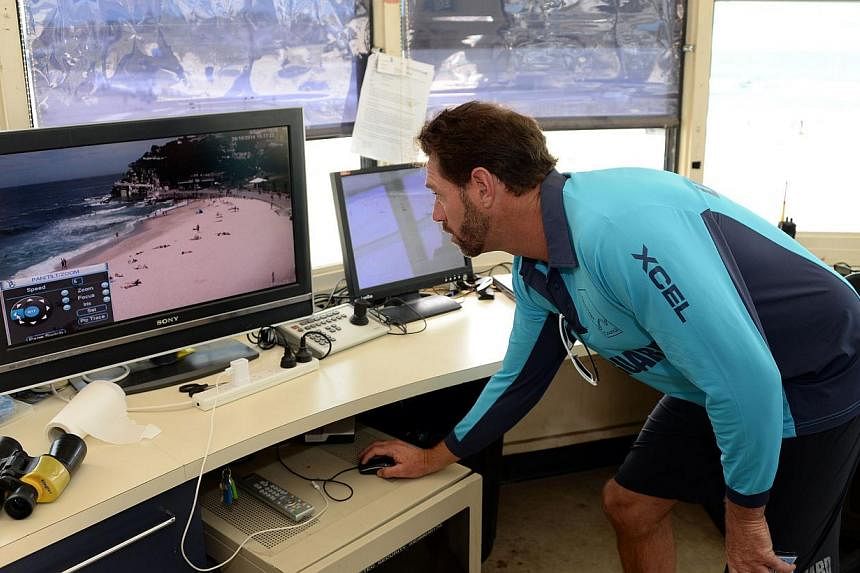SYDNEY (AFP) - Australia's best known lifeguard Bruce 'Hoppo' Hopkins knows there's nothing better than the naked eye to spot the dangers of the surf - rip currents and sharks.
But the head lifeguard at Sydney's most famous beach Bondi is happy nonetheless that the local authorities have installed cameras to help scan the water, a move officials believe saves lives. "You get a report that someone has gone into the water... you can put the camera on and get a closer look," Mr Hopkins tells AFP from his lookout at the centre of the crowded beach.
"Nothing is going to beat your eyes - those of the life guards from the tower. This is for back-up and assistance," he says of the cameras which have made it easier to monitor Bondi for a couple of years and have more recently been installed at nearby beaches.
Lifeguards patrol Bondi Beach every day of the year, but the neighbouring, and sometimes challenging, beaches of Bronte and Tamarama are unpatrolled by paid lifeguards during some of the southern hemisphere winter months.
The new cameras at Tamarama, installed a few months ago, and those at Bronte allow lifeguards at Bondi to monitor what's happening at those beaches in real time.
They can respond to any emergencies by jumping on a jetski, often reaching the scene in just one or two minutes.
"Often you will get a call that a board rider or someone is in trouble. You can look at the footage to get a jetski (out there). You can always zoom in too, on rock fishermen," says Mr Hopkins.
In decades past it used to be that swimming was discouraged at Sydney beaches due to the dangers of sharks and stingrays and for "reasons of decorum".
Not so today, with thousands visiting Bondi each year to enjoy the sun, sand and surf with Bondi lifeguards making 1,500 rescues per year as a result, dragging in swimmers, boardriders and rock fishers as well as recovering the bodies of suicides.
Mr Hopkins, who has been in the job for 23 years and who has become a familiar face on television screens around the world from the reality television show "Bondi Rescue", says it depends on the weather how hectic his work becomes each summer.
Some days the surf is "like a lake" while at other times a cyclonic swell makes rescues hard work.
Then there are freak waves like the one last summer which prompted a mass rescue when 40 panicked swimmers were swept out and had to be brought in at the same time.
In recent weeks, two dead great white sharks have been found in the nets which are designed to protect people at Bondi, a reminder that swimmers and surfers are not alone in the water.
Drones were recently trialled to provide a live camera feed of the water, potentially to check for any predators, but the idea is only in the early stages of investigation.
Waverley mayor Sally Betts - the council under which Bondi falls - says authorities were inspired in part to use cameras by the filming of "Bondi Rescue" but also because they could help keep beachgoers safe.
The cameras, housed in the lifeguards' elevated lookouts, watch over the beaches and those monitoring them can angle them around and zoom in to capture close up images of incidents.
They are used to monitor swimmers drifting into danger, keep an eye on people who may be too close to a cliff edge, and stop thieves from going through people's bags on the beach.
But she says education about beach dangers was still needed.
"We lost a young Japanese man last year and it was really tragic," she says, explaining that the man and a friend entered the water at a place where signs advised them not to due to an unpredictable sandbar.
They were spotted by lifeguards who rushed to warn them but the sandbar collapsed underneath them before they could get there.
"They managed to save one but they didn't save the other," Ms Betts says. "We just don't want that to happen ever.
"We've got hundreds of people in the water and we just want them to be safe."
Mr Hopkins says there is on average only one drowning every seven years, and the day-to-day business of saving a life is a "good adrenalin rush".
"It's always a satisfying thing to be able to rescue someone," he says. "They get to live another day."

